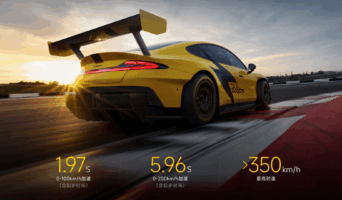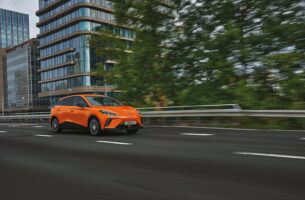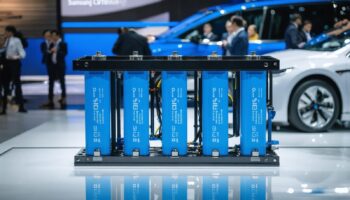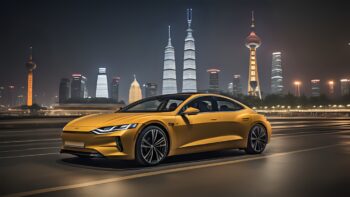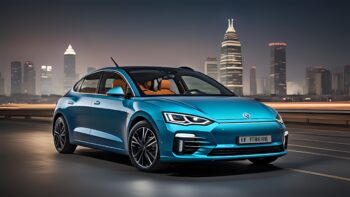Staying profitable in the new era of electrification
Way before the current recession, the automotive industry has been experiencing a bumpy ride: It is facing an expensive shift to electric cars, with high up-front investments, and little immediate returns. New challengers with a focused portfolio and a high degree of innovation are entering the market, further increasing the competition and adding a strain on incumbent firms.
Driven by changes in legislation and consumer sentiment, as well as buying incentives during COVID-19, electric cars are quickly gaining popularity. This, however, is a precarious trend for original equipment manufacturers (OEMs), as product costs for electric vehicles are higher than for traditional ones. Without the chance to pass on cost increases to consumers, this will result in a threat to profitability in the near future. We estimate that the situation will turn critical for traditional market players in 2024 / 25, when electric vehicle sales will become more significant.
In our newly published study, we quantified the current state of the industry and analyzed its future potential. In this article, we would like to outline how a profitable powertrain portfolio could look like in 2030.
Reshaping the portfolio
A key barrier to profitability is the complex product offering. The number of current OEMs’ powertrain archetypes is large and puts development budgets and capacities under stress. A clear strategy is needed to reshape the portfolio according to expected customer demands and profitable areas. Of course, ambiguity remains: The often described “tipping point” for when battery electric vehicles (BEVs) will be cheaper to produce than those powered by traditional internal combustion engines (ICEs), is in fact not a specific point in time, but depends largely on vehicle segment, power and battery size. Furthermore, customer demand is often hard to predict as buying decisions are emotional, and sometimes paradox: The current boom in SUV sales seems counter-intuitive in light of an increased awareness of the climate crisis.
Portfolio 2030: Powertrains and archetypes
To streamline the offering and focus on the customer value proposition, we structured the powertrain archetypes along passenger car segments and vehicle price class.
Battery electric vehicle (BEV)
For BEVs, we expect scalable battery system architectures with a high degree of commonality, and power scaling up to around 150 kW…200 kW on a single axis. The following subtypes will emerge:
- Distinctive green rocket BEV: Sustainable premium vehicle with high driving dynamics and moderate range (typically 55-80 kWh battery)
- Premium city BEV: Urban sustainable vehicle, in a small yet rather high-priced segment
- Rational green BEV: Small to compact sized sustainable vehicle, engineered to meet the required everyday range and offer an attractive cost position
Plug-in hybrid electric vehicle (PHEV)
As long-range (above 600 km) and fast recharge (under 5 min) capabilities will not be feasible with BEVs in the next decade, range-enhanced PHEVs will emerge:
- Dynamic yet zero-emission capable PHEV: Long-range capable vehicle offering all benefits of pure electric driving in top segment with high driving dynamics; simplified ICE with 3-4 cylinders, mid-sized battery (20-40 kWh), high power electric machine (up to 150 kW)
Fuel cell electric vehicle (FCEV)
Compared to the constraints of BEVs (mid-range) and PHEVs (emissions on long-range), the FCEV will be without these limitations and therefore preferably positioned as:
- Sustainable prime FCEV: Long-range and fast refill, with high dynamics and green credentials in top segments; Low ranges will be powered by grid rechargeable batteries. A large H2 tank (>5 kg H2) will act as a range extender and enable journeys over 100 km.
Internal combustion engine (ICE)
As top-dynamic powertrains will mainly be offered as BEVs and PHEVs, we expect a further downsizing to 3-4-cylinders. Other ICE powertrains will stay attractive as:
- Pure play ICE: In smaller and lower priced segments, with weak driving dynamics yet attractive prices and flexibility
- Marathon runner ICE: Allrounder with long-range driving capability within mid-sized and medium-priced segments, yet non-sustainable and declining social acceptance
The road to recovery
Due to the restricted development capacities, tight budgets and limited access to trained staff and experts in electric technologies, OEMs need to streamline their processes to improve future profitability. As the market has shown a higher willingness-to-pay for emerging technologies, it is crucial to reshape the portfolio along perceived customer value and expected relevant features. To avoid a critical situation due to an electric car sales boost in the coming years, OEMs must also limit product costs and reduce the varieties on offer.
Download the full study here: https://www.strategyand.pwc.com/de/powertrain-study.html

